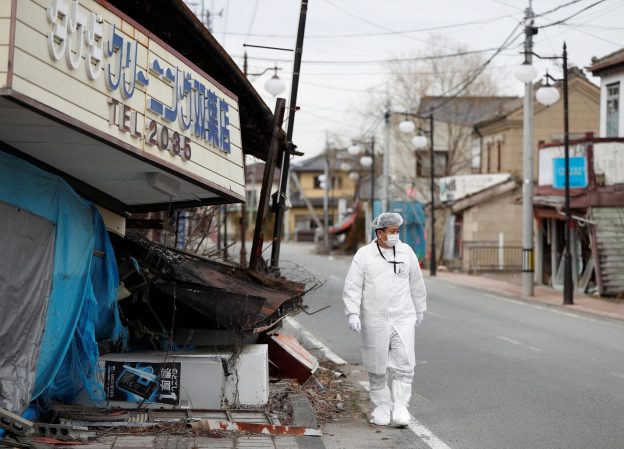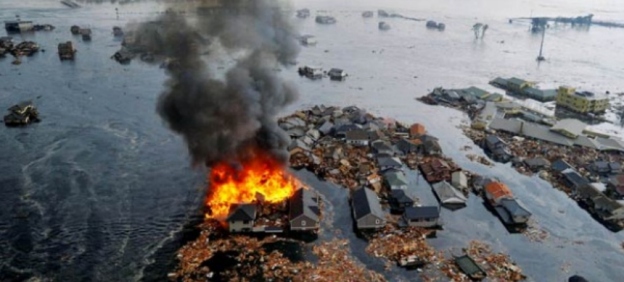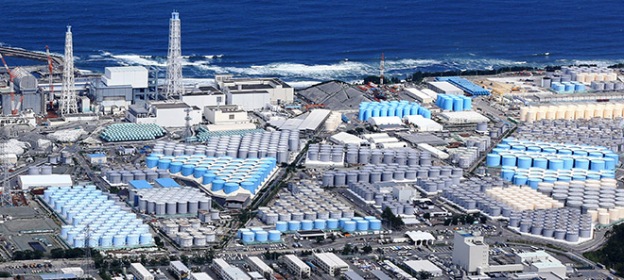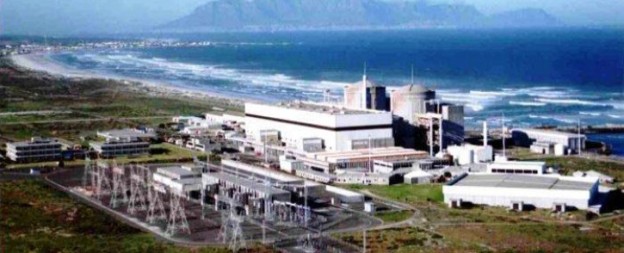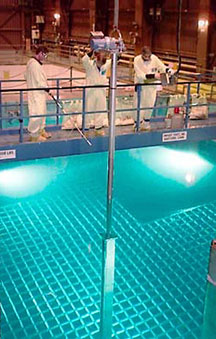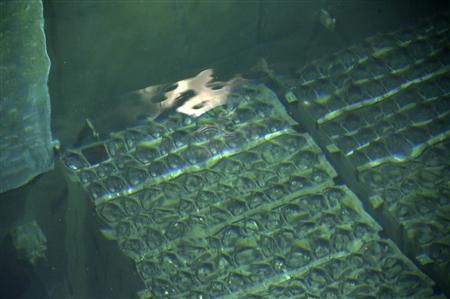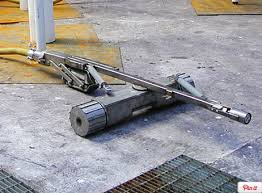Each form of waste at the Fukushima Daiichi Nuclear Power Station, where three reactors melted down after an earthquake and a tsunami on March 11, 2011, presents its own challenges.
400 Tons of Contaminated Water Per Day
The Tokyo Electric Power Company is pumping water nonstop through the three reactors to cool melted fuel that remains too hot and radioactive to remove. About 400 tons of water pass through the reactors every day, including groundwater that seeps in. The water picks up radiation in the reactors and then is diverted into a decontamination facility. But the decontamination filters cannot remove all the radioactive material. So for now, all this water is being stored in 1,000 gray, blue and white tanks on the grounds. The tanks already hold 962,000 tons of contaminated water, and Tokyo Electric is installing more tanks. It is also trying to slow the flow of groundwater through the reactors by building an underground ice wall.
Within a few years, though, and no one is sure exactly when, the plant may run out of room to store the contaminated water. “We cannot continue to build tanks forever,” said Shigenori Hata, an official at the Ministry of Economy, Trade and Industry. The authorities are debating whether it might be acceptable, given the relatively low radioactive levels in the water, to dilute the contaminated water and then dump it into the ocean. But local fishermen are vehemently opposed. Many people still do not trust Tokyo Electric because of its bungled response to the disaster, the worst nuclear accident since Chernobyl.
3,519 Containers of Radioactive Sludge
The process of decontaminating the water leaves radioactive sludge trapped in filters, which are being held in thousands of containers of different sizes.Tokyo Electric says it cannot quantify the amount of radioactive sludge being generated. But it says it is experimenting with what to do with it, including mixing it with cement or iron. Then it will have to decide how to store it.
64,700 Cubic Meters of Discarded Protective Clothing
The estimated 6,000 cleanup workers at the site put on new protective gear every day. These hazmat suits, face masks, rubber gloves and shoe coverings are thrown out at the end of each shift. The clothing is compressed and stored in 1,000 steel boxes stacked around the site.To date, more than 64,700 cubic meters of gear has been discarded, the equivalent of 17 million one-gallon containers. Tokyo Electric says it will eventually incinerate all this contaminated clothing to reduce the space needed to store it.
Branches and Logs From 220 Acres of Deforested Land
The plant’s grounds were once dotted with trees, and a portion was even designated as a bird sanctuary. But workers have cleared about 220 acres of trees since the meltdown spewed radiation over them.Now, piles of branches and tree trunks are stacked all over the site. Officials say there are about 80,000 cubic meters of this waste, and all of it will have to be incinerated and stored someday.
200,400 Cubic Meters of Radioactive Rubble
Explosions during the meltdown filled the reactors with rubble. Workers and robots are slowly and carefully trying to remove this tangled mass of crushed concrete, pipes, hoses and metal. Tokyo Electric estimates that more than 200,400 cubic meters of rubble — all of it radioactive — have been removed so far and stored in custom-made steel boxes. That is the equivalent of about 3,000 standard 40-foot shipping containers.
3.5 Billion Gallons of Soil
Thousands of plastic garbage bags sit in neat rows in the fields and abandoned towns surrounding the Fukushima plant. They contain soil that was scraped from land that was exposed to radiation in the days after the accident. Japan’s Ministry of the Environment estimates that it has bagged 3.5 billion gallons of soil, and plans to collect much more. It will eventually incinerate some of the soil, but that will only reduce the volume of the radioactive waste, not eliminate it. The ministry has already begun building a massive, interim storage facility in Fukushima prefecture and negotiating with 2,360 landowners for the thousands of acres needed to complete it. And that is not even a long-term solution: The government says that after 30 years it will need another site — or sites — to store radioactive waste.
1,573 Nuclear Fuel Rods
The ultimate goal of the cleanup is to cool and, if possible, remove the uranium and plutonium fuel that was inside the three reactors at the time of the disaster. Hundreds of spent fuel rods are in cooling pools inside the reactors, and the company hopes to have cleared away enough rubble to begin removing them next year. The much bigger challenge will be removing the fuel that was in use in the reactor core at the time of the meltdown.
The condition and location of this molten fuel debris are still largely unknown. In one reactor where a robot was sent in January, much of the melted fuel is believed to have burned through the bottom of the inner reactor vessel and burrowed into the thick concrete foundation of the containment structure. The plan is to completely seal the containment vessels, fill them with water and use robots to find and remove the molten fuel debris. But the rubble, the lethal levels of radiation and the risk of letting radiation escape make this an exceedingly difficult task.
In January 2017, the robot sent into one of the reactors discovered radiation levels high enough to kill a person in less than a minute. Another had to be abandoned last month after debris blocked its path and radiation disabled it.
Tokyo Electric hopes to begin removing fuel debris from the reactor cores in 2021. The entire effort could take decades. Some say the radioactive material may prove impossible to remove safely and have suggested leaving it and entombing Fukushima under a concrete and steel sarcophagus like the one used at Chernobyl.
But the Japanese government and Tokyo Electric say they are committed to removing all the waste and cleaning the site, estimated at a cost of $188.6 billion.
Excerpts from MOTOKO RICH, Struggling With Japan’s Nuclear Waste, Six Years After Disaster, Mar. 11, 2017
